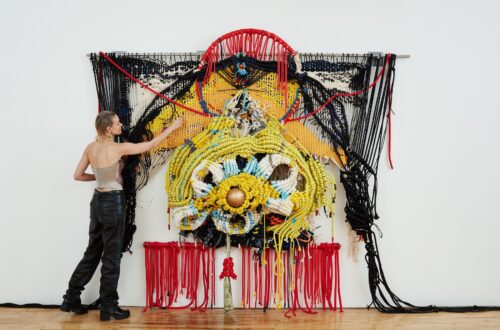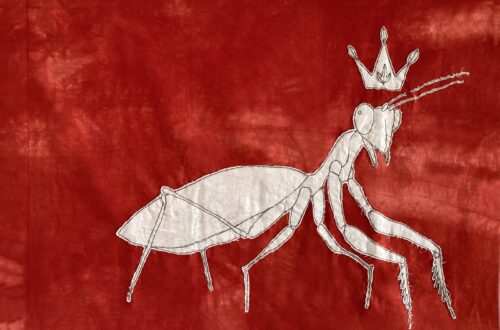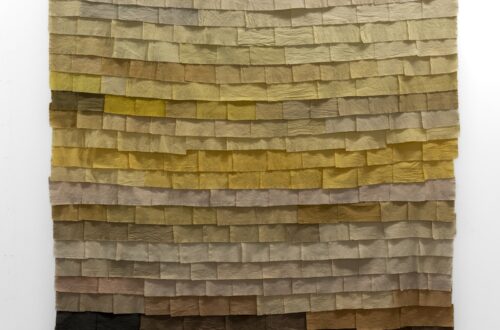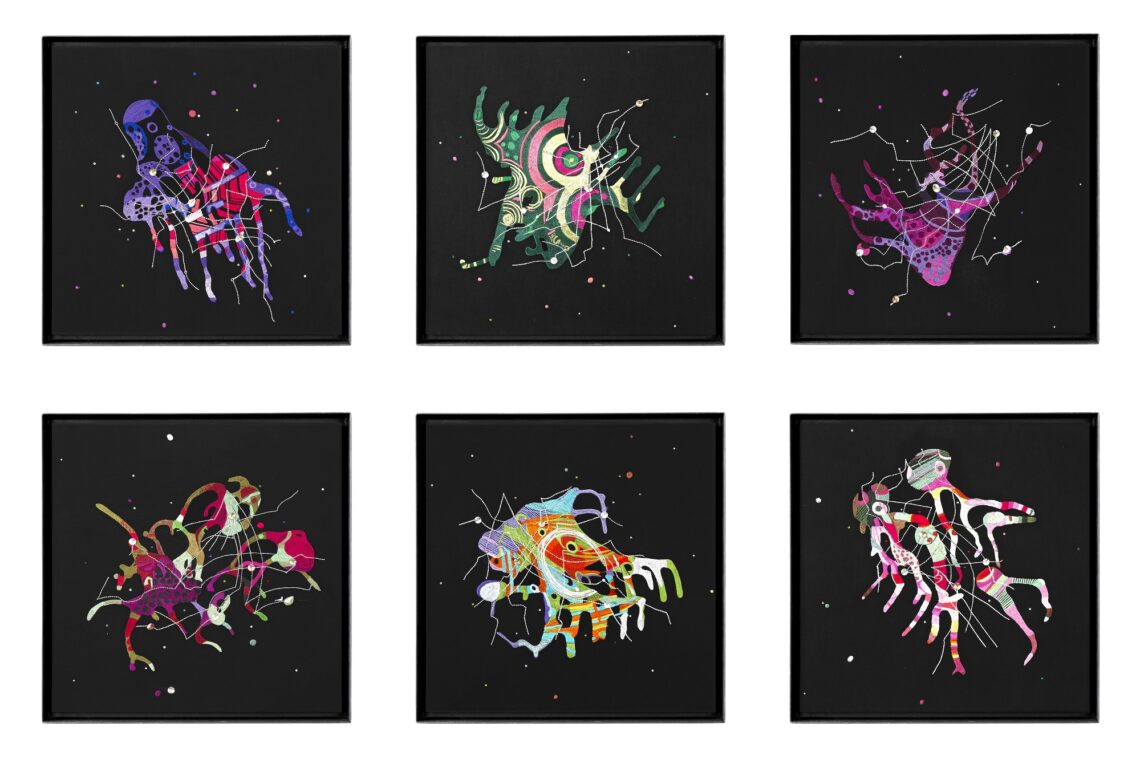
GISELLA CHAUDRY
| by Barbara Pavan |
Gisella Chaudry was born in Palermo in 1989 and has been living in Turin for several years. Growing up in a family shaped by the fusion of two cultures—her Pakistani father’s and her Sicilian mother’s—nurtured in her a profound sensitivity toward themes of identity and social disparity, which are central to her artistic research. Her practice is an inquiry into the human condition, an attempt to reconnect with the primordial roots of existence through a visual language that explores the relationship between the individual and the cosmos.
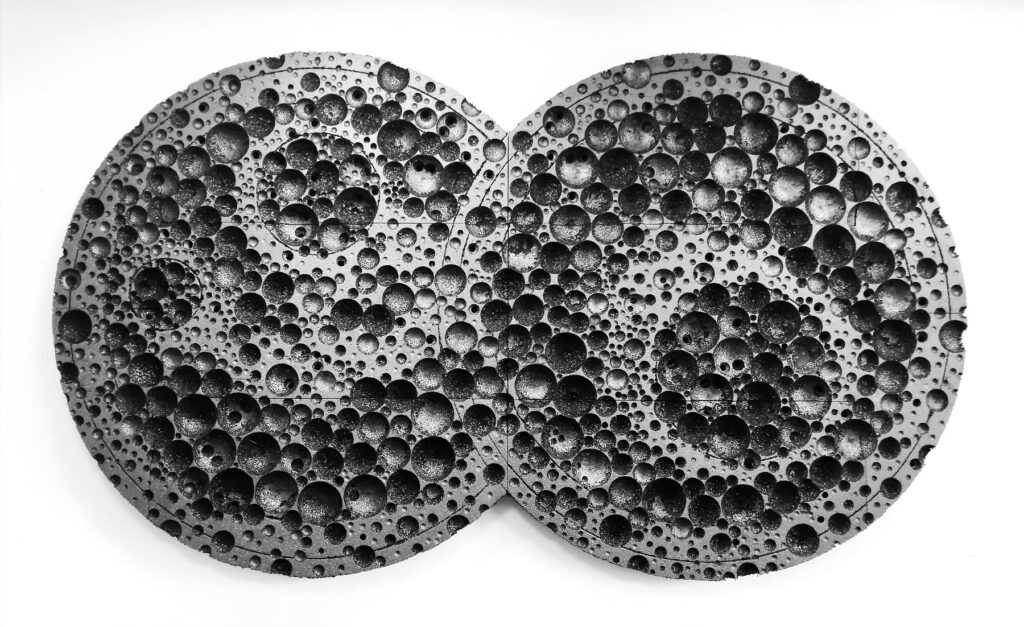
The artist employs diverse techniques, including combustion, embroidery, and installation—tools through which she constructs narratives suspended between reality and imagination, where the human dimension confronts the mystery of the infinite and the unfathomable. Her research is rooted in a conceptual reflection on change and impermanence, conceived as fundamental principles of human relationships and existential dynamics.
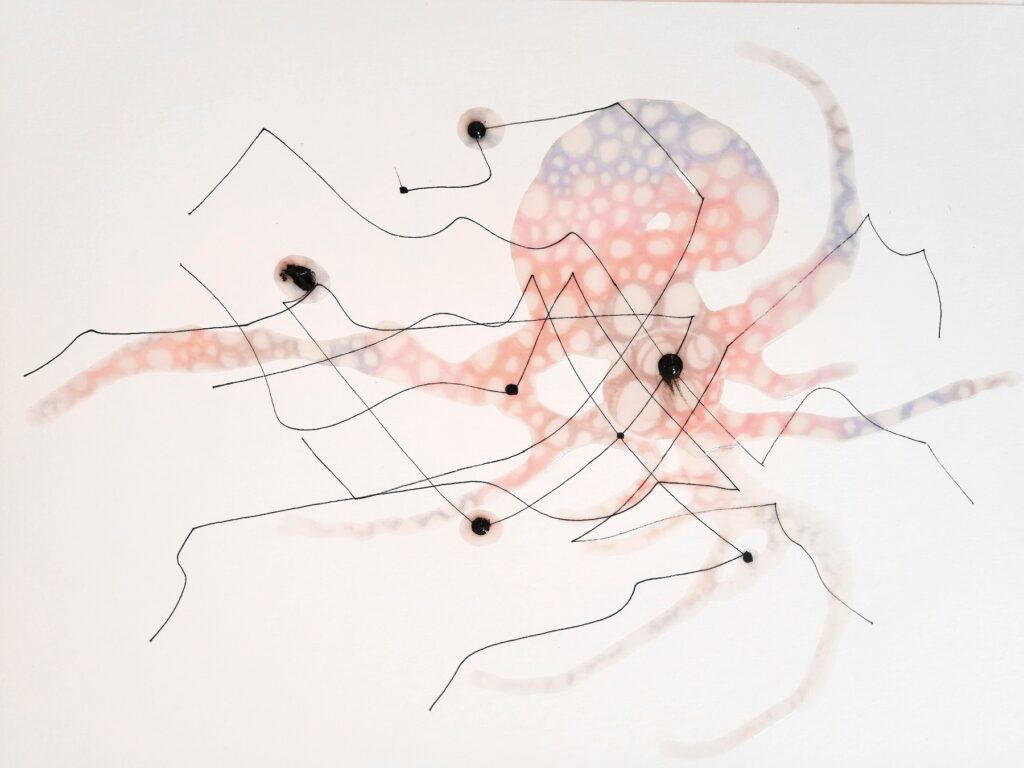
What led you to choose embroidery, an apparently obsolete technique, as your expressive medium?
Embroidery is a tradition deeply embedded in my family. My father, of Pakistani origin, embroidered wedding dresses and continued this practice even after moving to Italy. Embroidery is a universal language that renews itself while preserving the most intimate aspects of a culture. I see it as an act of communication between past and present, between identity and formation, capable of weaving together distinct stories.
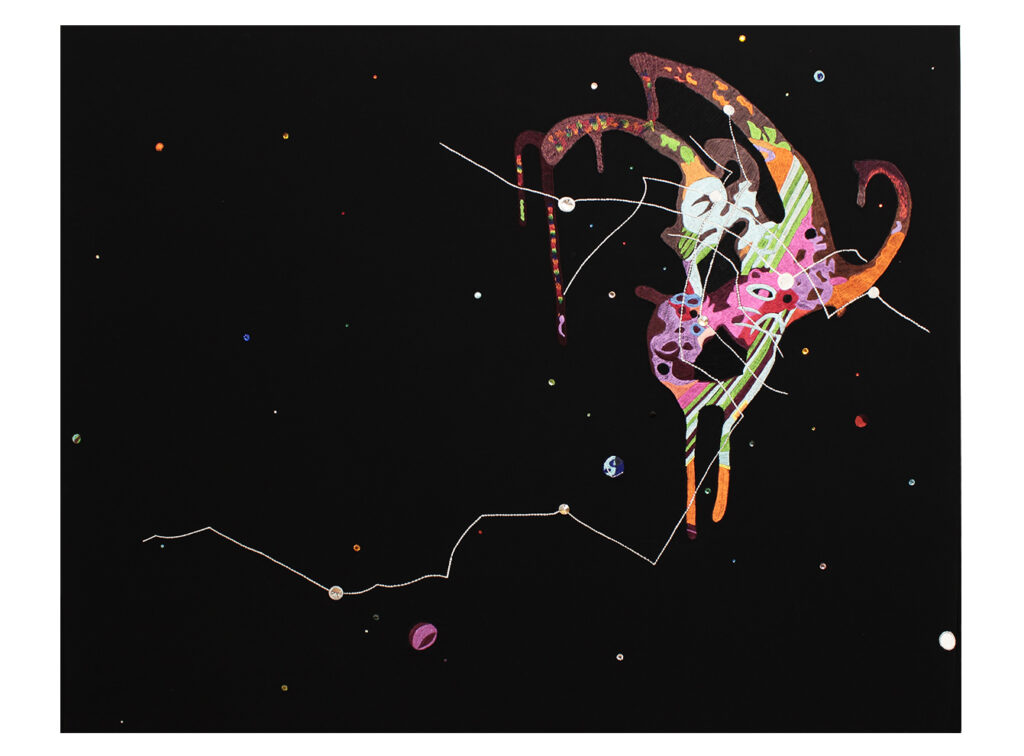
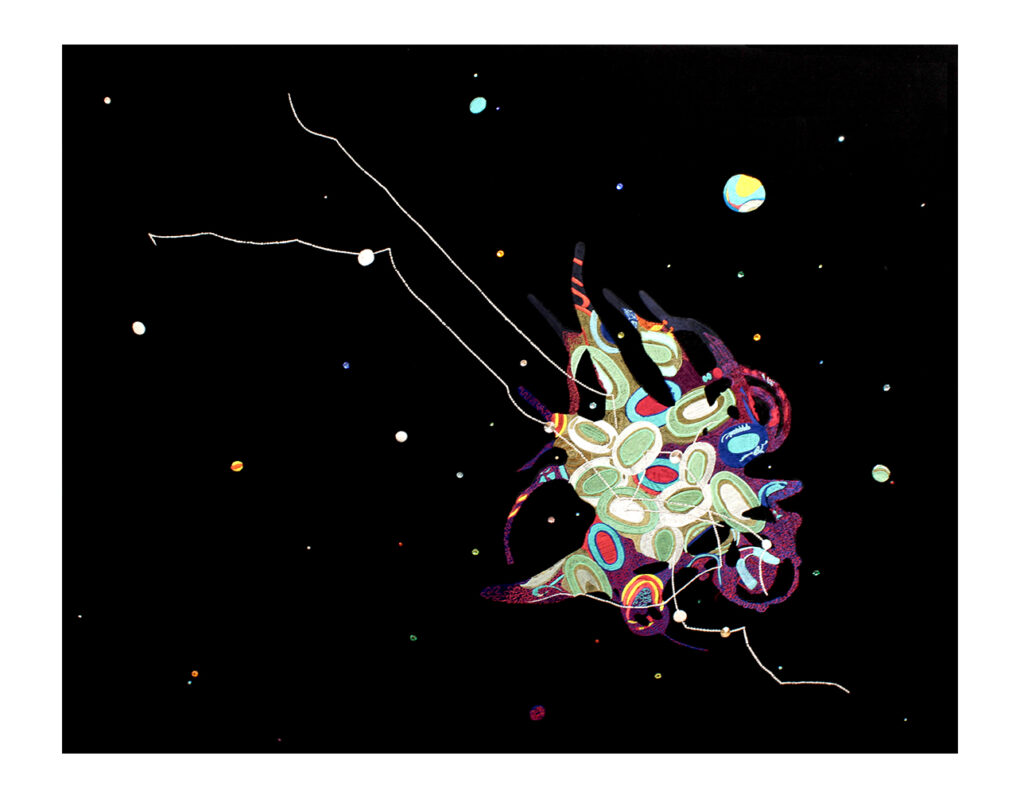
As the daughter of two cultures rich in history and traditions, beyond technique, how has this family heritage influenced your identity as an artist and your artistic research?
What is perceived as enriching in a cultural context is sometimes interpreted as difference in daily life, creating social distances. My reflection on multiculturalism has led me to explore the gap between social classes, in which technological dominance increasingly limits the emergence of a new humanism. This realization has become, for me, a means of reconnecting with the primordial, where the expanse of the cosmos outlines utopian worlds.
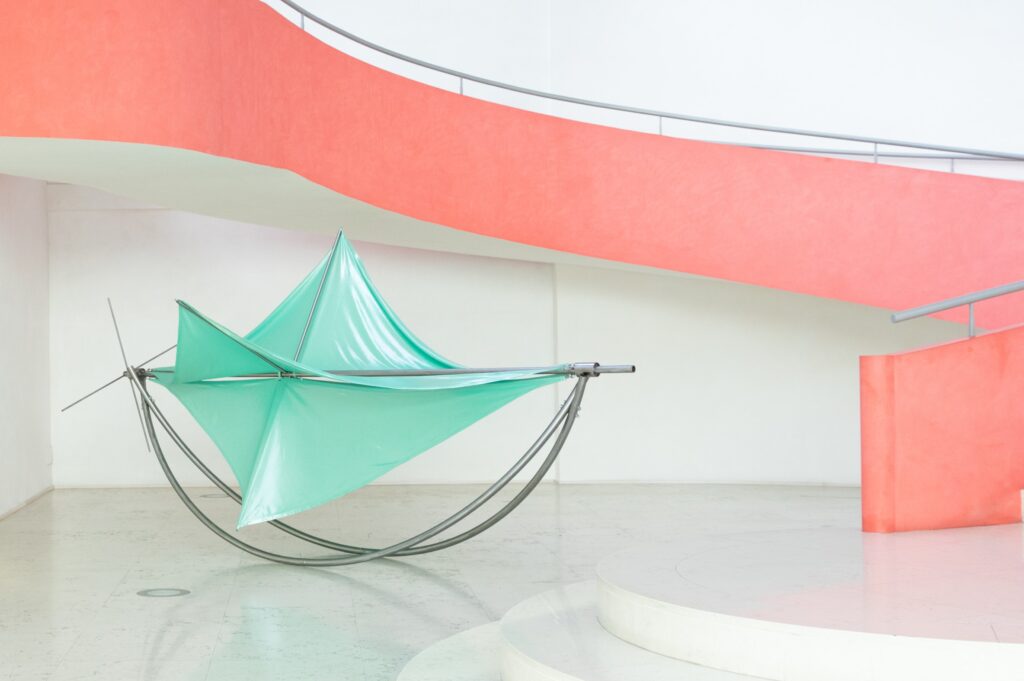
If I understand correctly, embroidery itself comes into your works only after a long phase of ideation and planning. Can you describe the genesis of your pieces? How complex and layered is the preparatory phase, the part that remains unseen in the finished work?
The TRAIETTORIE series follows several stages in its creation. It begins with drawing, where the transparency of synthetic materials and the layering of color intersect to generate shapes reminiscent of constellations. The gestural nature of the process is then controlled and reorganized digitally—a transition that shifts positive to negative and transforms the sketch into a structured project. The resulting files are sent to Pakistan, where artisans in Islamabad complete the work through embroidery.
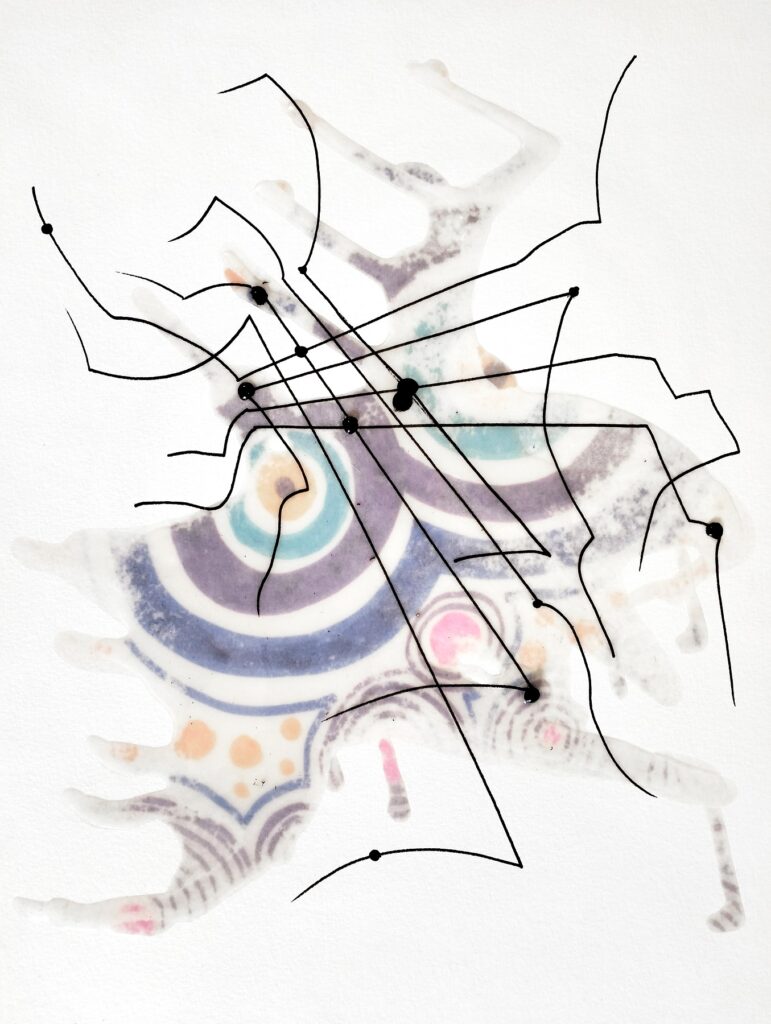
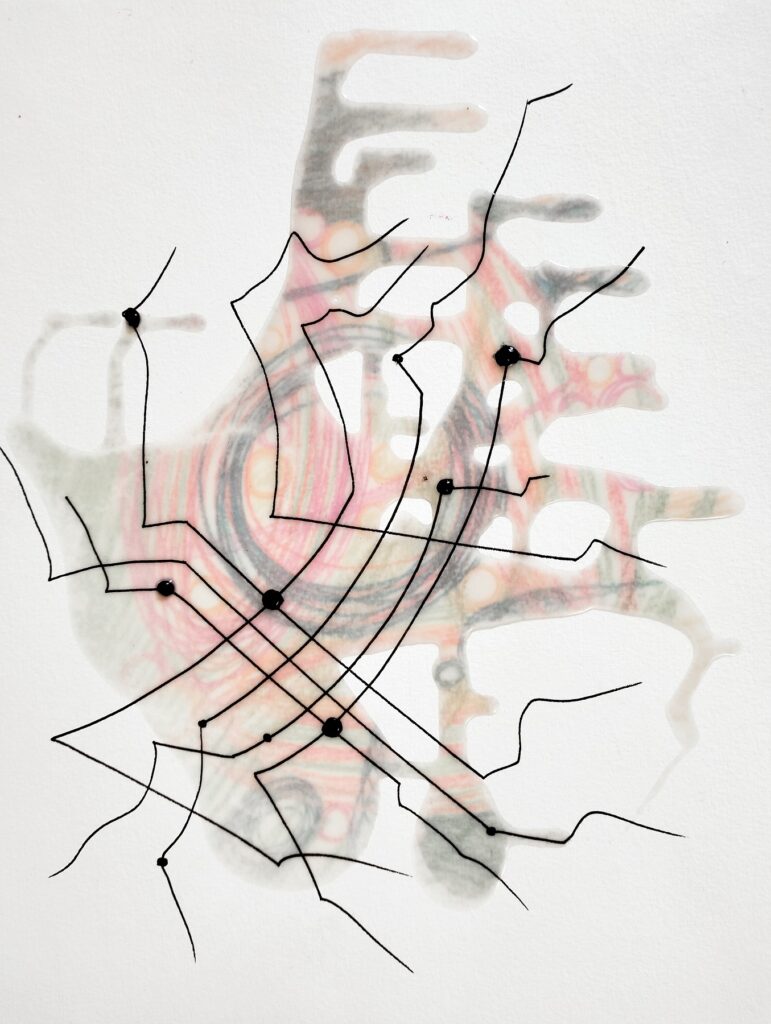
In the transition from your initial project to its embroidered realization by other hands, there is an inherent impossibility of total control over the final result. Is this element of unpredictability an integral part of your creative process and the intrinsic meaning of your work?
This collaboration renders the process open and mutable—the work itself becomes a living entity that evolves in form through multiple interpretations. The original meaning is preserved and decoded by the embroiderers through their expertise. This “four-handed” process incorporates new marks and fosters a constructive dialogue of coexistence on a surface perforated by colors.
What value does working with and through the hands hold in your artistic vision?
Manual craftsmanship is a fundamental value in artistic practice; it establishes an intimate relationship with matter and encourages the search for solutions and compromises to give form to a concept.
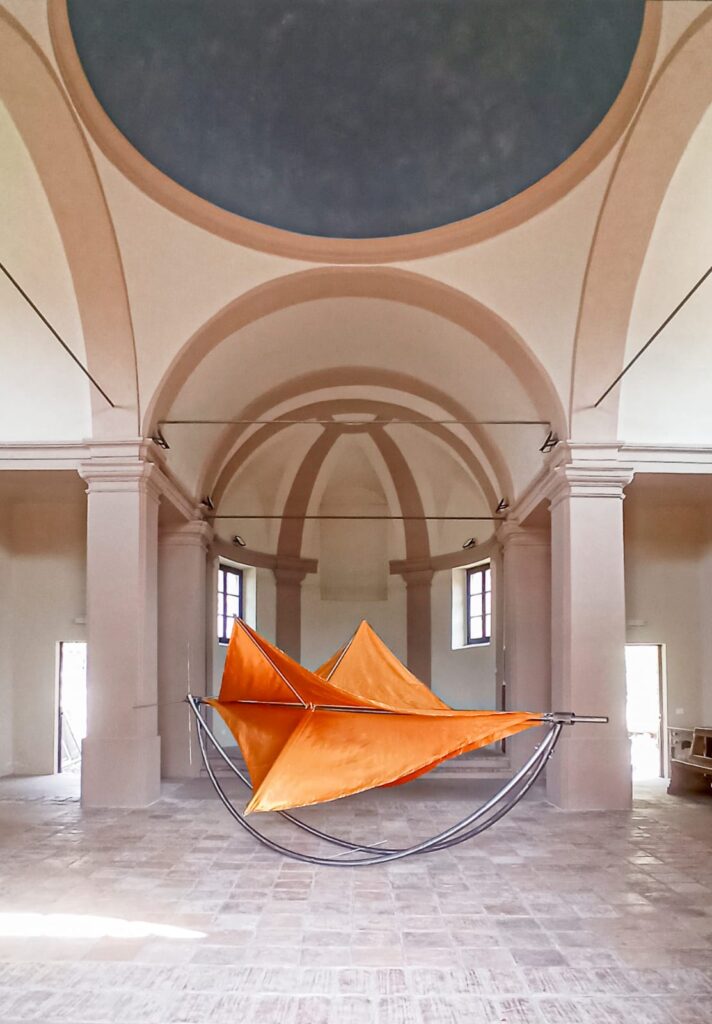
Beyond its literal meaning, what is a “cosmogony” to you?
A cosmogony is an ongoing present, which today appears colder and more confused. It is the totality of meanings, a metaphysical realm where energies find their balance and unravel through time and mystery.
Chaos and order: how do these two concepts manifest in your research and artistic practice?
Chaos and order are intrinsic to experimentation. They are part of an entropic process that alternates between theory and practice, a necessary exchange to arrive at the elaboration of an authentic element.
The transition from two-dimensional work to three-dimensionality—does it represent an entry into the realm of the invisible, an exploration of utopia, or rather an incorporation of the real world into that dimension?
Two-dimensionality and three-dimensionality are constants that travel in the same direction, interpenetrating one another to enable the clarification of other worlds.
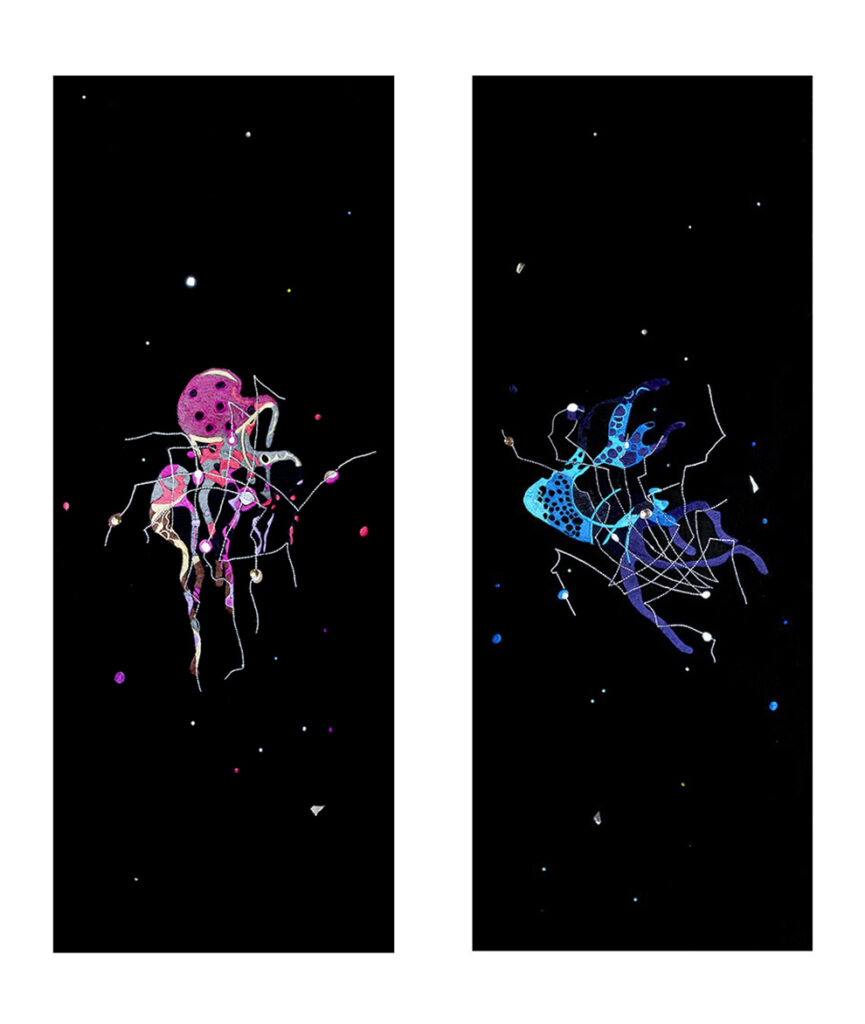
Does your exploration of the dreamlike universe stem more from existential speculation or from a desire to escape a reality you feel detached from? Or is it a search for one or multiple points of contact between different universes?
Dreams are an archetype that connects humans to their many dimensions, surfacing in our existence while keeping primordial characteristics alive. Rather than an alternative reality, I perceive them as a form of knowledge—a way to access deeper and more archaic states.
How does quantum physics influence your research, and how has it shaped your experimentation?
Scientific research in these fields analyzes the dimensions of space and time. I find a strong resonance with the dream world, where the acceptance of contradiction as an inescapable phenomenon comes naturally.
Which work of yours feels most intrinsically connected to you?
All of them, in different ways.
Why does one make art? Or rather, is one an artist, does one become an artist, or does one practice art?
The terms “art” and “artist” merely define ways of being, communicating, and observing.
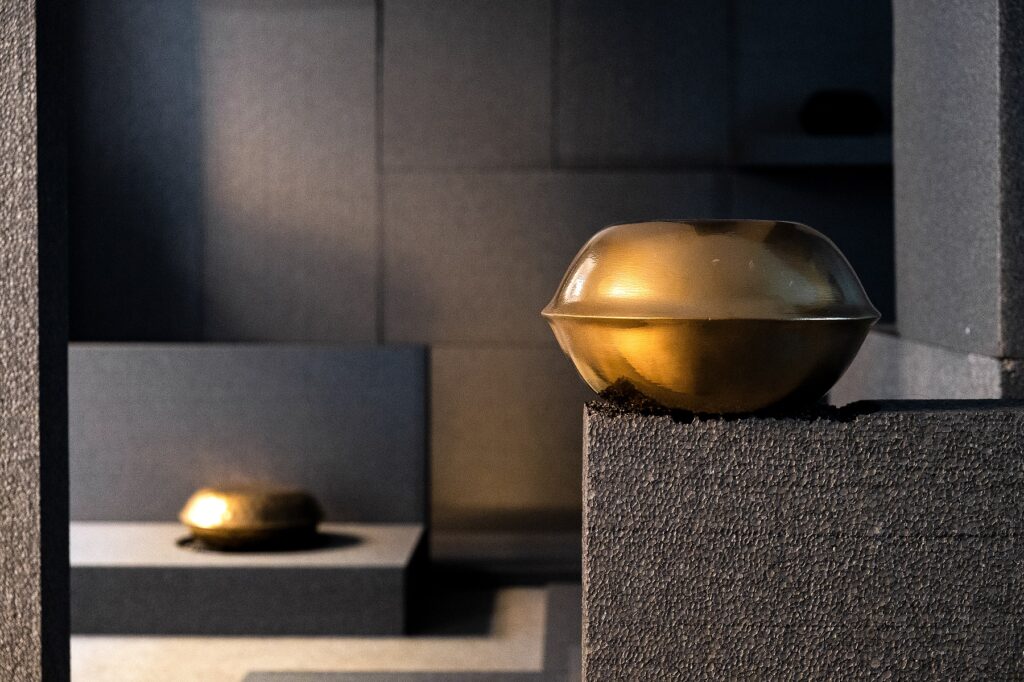
Gisella Chaudry graduated at the School of Sculpture at the Accademia di Belle Arti in Palermo. She has participated in numerous exhibitions, including recent solo shows: (2024) AD ASTRA, Maurizio Caldirola Arte Contemporanea, Monza, curated by Paola Stroppiana; (2023) CATARTICA, Hall of the Patrizia Pepe headquarters, Capalle, Florence, curated by Paolo Grassino and Rosanna Tempestini Frizzi; EQUINOZIO D’AUTUNNO, Museo d’Arte Contemporanea, Castello di Rivara, Turin; (2021) PUNTO DI CONTATTO, Raffaella De Chirico Arte Contemporanea, Milan. Her group exhibitions include: (2024) COSÌ LONTANO COSÌ VICINO, M45 Marco Bertoli Angelo Enrico, Milan, curated by Marco Bertoli; GERMINALE, Monferrato Art Fest, Alfiano Natta, Alessandria, curated by Francesca Canfora; BACK AND FORTH, Raffaella De Chirico Arte Contemporanea, Milan; ARTEAM CUP 2024, Palazzo del Commissario – Fortezza del Priamàr, Savona, curated by Livia Savorelli and Matteo Galbiati; (2023) TENSIONI, Museo Nazionale di Matera, curated by Alessandro Demma and Annamaria Mauro; CROSSROAD, Galleria Umberto Benappi, Turin, curated by Paola Stroppiana.



